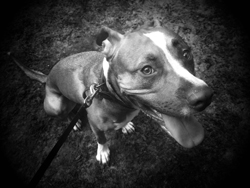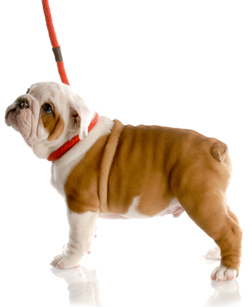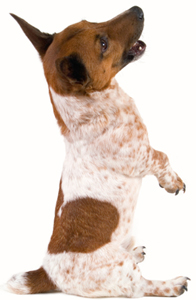Training anyone is challenging, whether it’s for a job, or as an educator – and that’s if you speak the same language as the person you’re training! Training your dog is even more challenging, because it is a meeting of minds between two entirely separate species! So how do you bridge the gap between human and animal to train your dog?
Psychology has all kinds of great studies about this. It is called operant conditioning, and it means we buttress behaviors with positive (adding something) or negative (taking something away) reinforcement or punishment. Further studies have shown that positive reinforcement works better than any other kind of training or learning. So how can you train your dog in a completely positive way?
Positive reinforcement includes all the fun things we love! Treats, hugs, and petting can all do far more to help your dog learn tricks and positive behaviors than yelling at it or punishing it when it does something bad. Furthermore, once you have taught the dog the behavior, verbal cues will suffice most of the time to ensure the dog continues the behavior whether you reward it or not!
 As crucial as dog training is for your pet’s social development, it’s also a task that can be extremely frustrating to commit to long-term as an owner. It’s perfectly normal to feel like you want to throw in the towel on days that are particularly hard for your dog to stay focused and listen, but that’s the biggest mistake you could make. Without consistency, dedication and patience, you can’t expect your dog to learn correct behaviors and get rid of the ones that drive you crazy (jumping, digging, barking, chewing, leash pulling, etc.) and can be dangerous (aggression, biting, growling, etc.). Addressing these unwanted actions and turning them around will take a while, but in the end, you’re sure to see it’s well worth the investment of your time. Below are a few tips for handling your dog’s training in a positive way, even when frustration begins to set in.
As crucial as dog training is for your pet’s social development, it’s also a task that can be extremely frustrating to commit to long-term as an owner. It’s perfectly normal to feel like you want to throw in the towel on days that are particularly hard for your dog to stay focused and listen, but that’s the biggest mistake you could make. Without consistency, dedication and patience, you can’t expect your dog to learn correct behaviors and get rid of the ones that drive you crazy (jumping, digging, barking, chewing, leash pulling, etc.) and can be dangerous (aggression, biting, growling, etc.). Addressing these unwanted actions and turning them around will take a while, but in the end, you’re sure to see it’s well worth the investment of your time. Below are a few tips for handling your dog’s training in a positive way, even when frustration begins to set in.  Do you have a puppy and are worried they might get out of control at some point? You should consider having them trained. In fact, the earlier the training starts the better it is for the puppy.
Do you have a puppy and are worried they might get out of control at some point? You should consider having them trained. In fact, the earlier the training starts the better it is for the puppy.